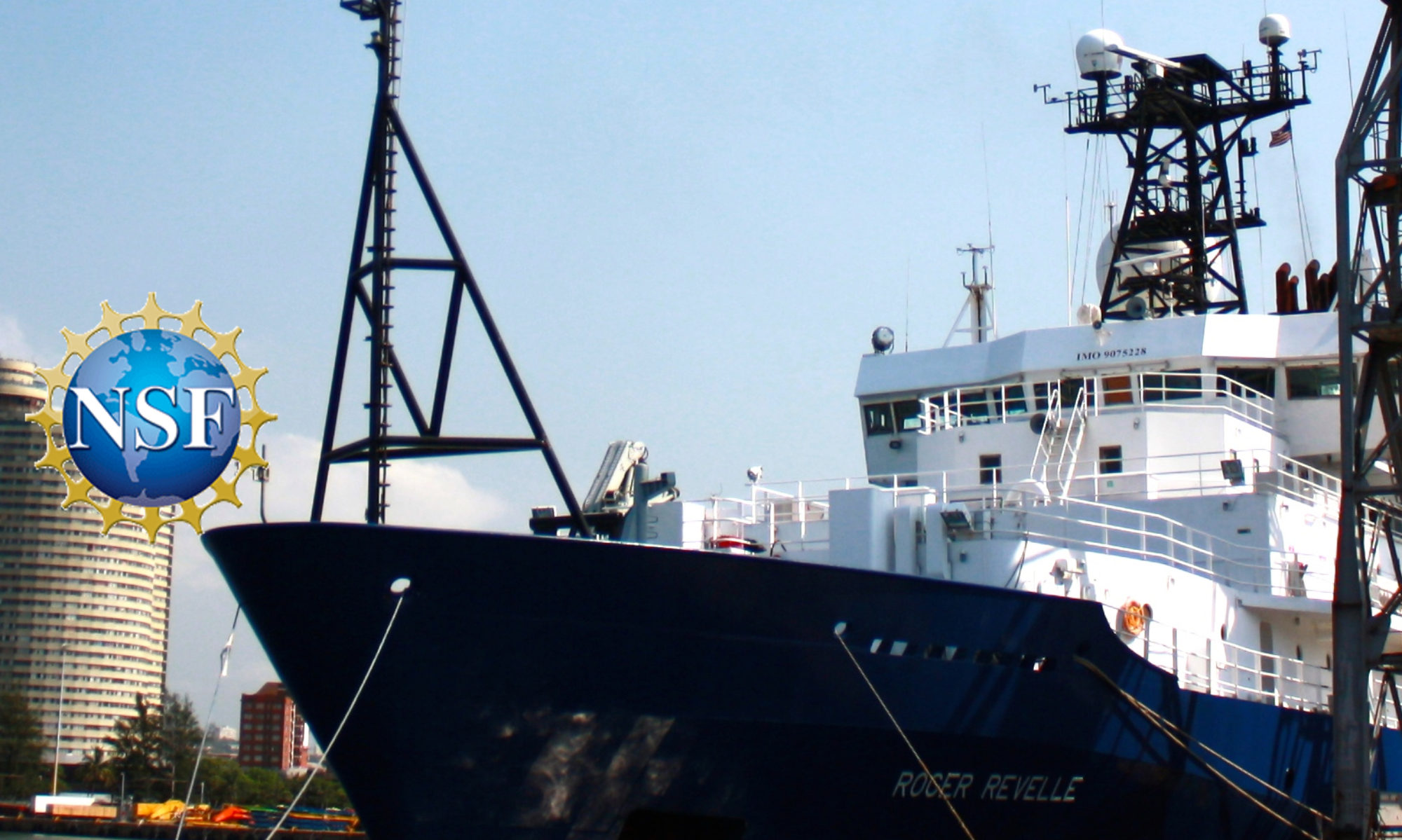By Brendan Philip
Much of what marine geologists study is invisible to the naked eye. While standing on a ship on the surface of the ocean, we can see nothing but a vast expanse of water extending in all directions. From this perspective, the seafloor is hidden by several miles of dense seawater that absorbs light and hides the deepest and darkest portions of the ocean.
But when we cross the threshold separating the deck of the ship from the computer lab we are quickly transported down through the ocean. We suddenly see vast abyssal hills and steeply sloping seamounts displayed on monitors spread throughout the ship. This journey takes us down to a place that has never been exposed to sunlight and where sonars are needed to “see” through the ocean. Using acoustic techniques onboard the R/V Thompson in 2014, we discovered a new seafloor vent, or seep, that releases fresh, warm and fast-flowing water into the overlying ocean. While seafloor seeps are common along continental margins, this seep’s origin is a mystery. My objective during this expedition on the R/V Revelle is to collect acoustic data over the vent to shed light on the geologic history of the site and to provide a window into geochemical process occurring deep within the Cascadia Subduction Zone.
Extending from southern British Columbia to Northern California, the Cascadia Subduction Zone is formed by the collision of the Juan de Fuca oceanic plate and the North American continental plate. Because of its density, the Juan de Fuca plate descends beneath the continent and carries with it oceanic sediments. When these sediments heat up under the increasing pressure of the overlying rock, vast amounts of water are released through mineral dehydration reactions. This water migrates along faults and is often released at the seafloor, supporting dense microbial and macrofaunal communities and contributing gases to the overlying ocean. During transport along faults, this water counteracts the load of the overlying rock and sediments, effectively lubricating the faults and decreasing the likelihood of an earthquake by preventing the accumulation stress. By studying the conditions under which fluids are produced within the seafloor, I hope to improve understanding of the circumstances that lead to earthquake initiation within the Cascadia Subduction Zone.
This seafloor seep, named Pythia’s Oasis after the ancient Oracles of Apollo, is emitting fluids from the seafloor at a rate rarely observed in this type of tectonic setting. During this expedition, I plan to make several passes over the seep using the multichannel seismic system on the R/V Revelle. With this system, I’ll be able to image beneath the seafloor to determine whether there are any faults feeding this seep from below. While the survey data may not point towards a definitive source, the results will help to improve existing hypotheses for the origin of the fluids.
These hypotheses will then be tested during an expedition in 2019 where we’ll use the remotely operated vehicle Jason to dive to the seafloor and collect fluid samples emanating from it. Although that cruise is still over two years away, I can already feel the excitement building as we continue to collect more data and make plans for our return to the site. While progress is slow, each new observation brings us one step closer to the origin of Pythia’s Oasis.
— Brendan Philip is a graduate student at the University of Washington
